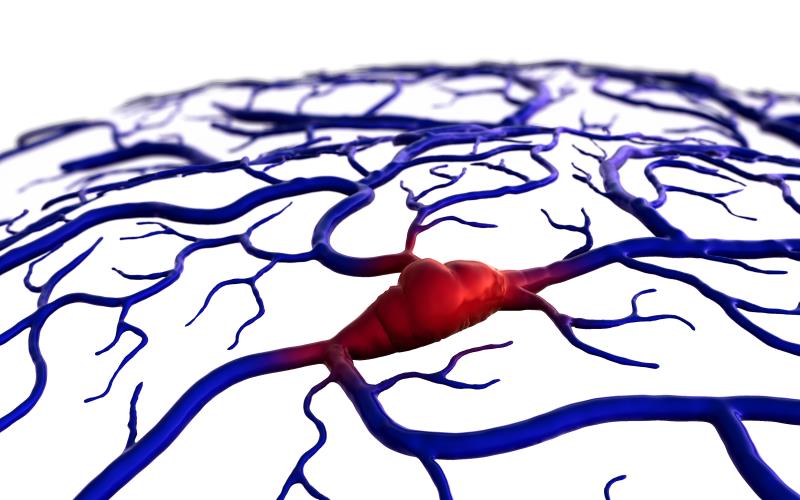
The addition of endovascular treatment (EVT) to standard medical treatment (SMT) in patients with acute ischaemic stroke (AIS) attributable to basilar artery occlusion (BAO) was associated with improved functional outcomes and reduced mortality, according to the results of the nonrandomized, prospective BASILAR* study presented at ISC 2020.
Acute BAO is rare but potentially devastating with severe disability and mortality rates. [Stroke 2009;40:3834-3840; Lancet Neurol 2011;10:1002-1014] Despite previous studies on acute BAO, most are limited by small populations, single-arm designs, and use of outdated EVT techniques. [JAMA Neurol 2016;73:1225-1230; Stroke 2017;48:3252-3257]
Several trials have established the efficacy and safety of EVT for AIS in the anterior circulation. [N Engl J Med 2018;378:708-718; N Engl J Med 2018;378:11-21] However, it remains unclear whether the benefit may translate to acute BAO, noted the researchers.
The researchers evaluated the impact of EVT in 829 consecutive patients (73.8 percent male, median age 65 years) presenting with an acute symptomatic and radiologically confirmed BAO. Participants received SMT** either with (EVT arm; n=647) or without EVT*** (SMT arm; n=182). [ISC 2020, abstract LB17; JAMA Neurol 2020;doi:10.1001/jamaneurol.2020.0156]
A substantial improvement in the 90-day functional outcomes was observed in the EVT vs the SMT arm (adjusted common odds ratio [adjcOR], 3.08; p<0.001). “Our study showed that, in real-world practice, patients with AIS and confirmed acute symptomatic BAO appear to benefit with respect to functional recovery when EVT is administered within 24 hours of estimated occlusion time,” said the researchers.
Compared with the SMT arm, the EVT arm had a significantly higher fraction of participants achieving a modified Rankin Scale (mRS) score of ≤3 (32.0 percent vs 9.3 percent; adjusted OR [adjOR], 4.70; p<0.001) and a lower mortality rate (46.2 percent vs 71.4 percent; adjOR, 2.93; p<0.001) despite an upsurge in the rate of symptomatic intracerebral haemorrhage (sICH) at 90 days (7.1 percent vs 0.5 percent; p<0.001).
The 90-day mRS ≤3 outcomes suggest that the likelihood of walking independently was higher with EVT recipients, noted the researchers.
Despite the low mortality rate in the EVT arm, this was relatively higher compared with previous reports. [J Am Heart Assoc 2018;doi:10.1161/JAHA.118.009419; Eur J Neurol 2019;26:299-305] “[This] could be explained by the delayed observed reperfusion times and the severity of stroke deficits, both well-known factors for worse prognosis,” explained the researchers.
The sICH rate with EVT, albeit high, was lower than that reported in the BASICS# registry. [Lancet Neurol 2009;8:724-730] “[This] probably reflects the more advanced intervention techniques available today,” they added.
More than a quarter (27.5 percent) of EVT recipients had good outcomes (mRS scores ≤2). While this appears low compared with evidence reflecting higher rates, [Radiology 2019;291:730-737; J Neurosurg 2018;129:1482-1491] the fraction of participants with large-artery atherosclerosis stroke (64.6 percent, 20.3 percent of whom exhibiting good outcomes) in the current study should be taken into account. Given the poor outcomes tied to BAO, the observed mRS scores seem relatively favourable, the researchers pointed out.
“[O]ur study contributes evidence to support the safety and efficacy of EVT for patients with AIS caused by BAO who could be treated within 24 hours of estimated occlusion time … [Therefore,] EVT should be considered in addition to SMT in selected patients [in this setting],” said the researchers.
The findings are even more important given the paucity of data comparing the outcomes of the two treatment strategies, as well as the challenges that come with randomization in this patient subset, they added. [Interv Neuroradiol 2020;26:5-6]
Despite the greater fraction of patients in the EVT vs the SMT arm, the study is a good representation of daily clinical practice for patients with acute symptomatic BAO, noted the researchers. “[Our study] constitutes one of the best available data about BAO treatment [despite its limitations].”
Further insight
While the results contradict those in BASICS, the researchers are anticipating updates from this study, as well as from the BAOCHE## trial. “[BASICS] was concluded 10 years ago … before modern EVT techniques and mechanical recanalization devices became available … [Therefore,] its findings may not be applicable to current practice.”
Moreover, it remains uncertain whether BASICS and BAOCHE will be able to achieve the study inclusion targets. “[A] growing number of stroke centres are unwilling to randomize patients to SMT alone after the positive results of several trials for EVT in patients with anterior-circulation stroke … [Nonetheless,] we are looking forward to the results of [both studies as these] may have important influence on the management of these patients,” they added.